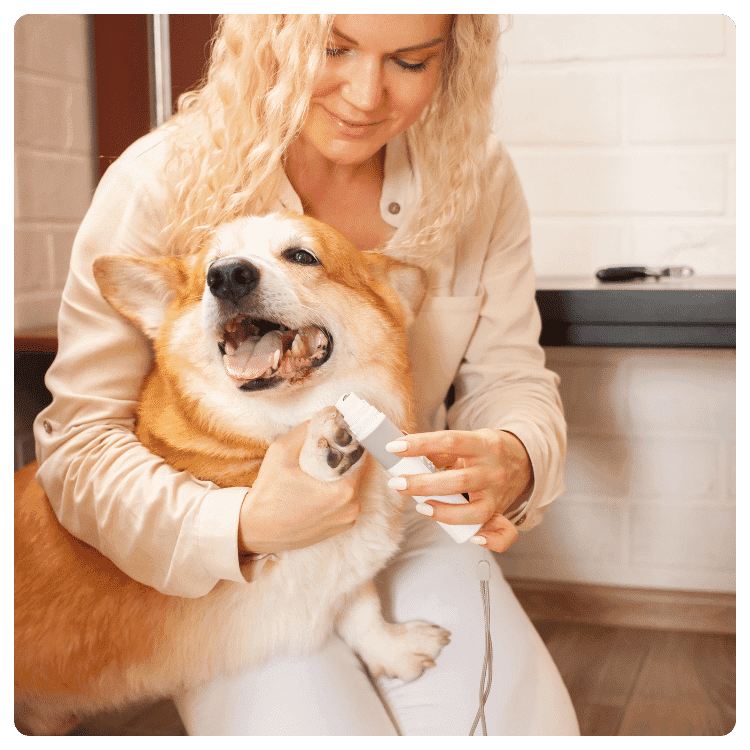
https://www.barkandwhiskers.com/2015-04-12-nl-osteomyelitis/
https://www.barkandwhiskers.com/p/9bed2bbd-007f-45cf-85b9-6a16dc96f3aa/
By Dr. Becker
Osteomyelitis is inflammation of the bone and/or bone marrow caused by either a bacterial or fungal infection. Inflammation may be the result of a chronic or acute infection that originates in another area of the body and travels to the bone through the bloodstream, or it may come from another infection that is located near the bone.
Causes of Osteomyelitis
Fungal infections that result in osteomyelitis are typically due to a systemic fungal disease such as valley fever (coccidioidomycosis), blastomycosis, or cryptococcosis.
Bacterial bone infections usually occur secondarily to bites or other wounds, sometimes bone fractures, or foreign objects like foxtails that get into the body. A bacterial infection in another area of the body, for example, a dental or ear infection can also move through the bloodstream to the bone.
Other causes of infection can include accidents or injuries involving bone and soft tissue, or a post-operative infection that develops after a dog or cat receives a surgical implant or undergoes another type of bone surgery, for example, a fracture repair.
Symptoms of Osteomyelitis
Early symptoms of osteomyelitis typically include pain, fever, and soft tissue swelling. Your dog or cat may be lethargic, weak, depressed, or unwilling to eat. He might also experience episodic lameness or the inability to move the affected limb at all. Muscle-wasting may occur, which means your pet doesn’t want to bear weight on the affected leg, so the muscles shrink from lack of use.
Oftentimes joints will begin to swell as the infection spreads, and if the condition is chronic, fluid or pus may drain from the soft tissue surrounding the infected bone. If the infection is the result of a broken bone or repair of a fracture, healing of the bone may be inhibited.
Diagnosis
Your veterinarian will take a complete history and perform a physical examination and appropriate blood tests. He or she will culture fluid or pus that may be draining, perhaps biopsy involved tissues, and order x-rays and possibly an ultrasound.
Lab work results will typically reveal the infection and the level of your dog’s immune system response. If a fungal infection is suspected, special testing may be required to isolate and identify the organism involved.
X-rays will show soft-tissue swelling, changes in the fibrous sheath surrounding the bone, and even new bone growth in chronic cases. If the infection persists, bone necrosis will also be evident.
Ultrasound imaging can give your vet a better view of the bones, which may show accumulations of pus in the bone. He or she can then use the ultrasound to take a sample of fluid and pus from the infection site for analysis and culturing.
Treatment Options
Once the culture identifies the specific organism causing the infection, your vet can devise a treatment protocol. It is very important that the exact infectious agent(s) is identified via culture so that the most appropriate therapy is instituted.
Bone infections are considered serious and should be treated as aggressively as possible. In dogs or cats with wounds, the first step is to irrigate the wound to clean it and allow the pus to continue draining away from the bone. Surgical removal of devitalized tissue and sequestra, which are dead fragments of bone, will also be required.
If a broken bone is involved, it must be stabilized to prevent further damage to surrounding tissues and the remaining bone. This may require surgery depending on the location and severity of the fracture. In really severe fractures, there is a risk that the infection can spread to other parts of the body and other tissues. Sadly, sometimes amputation is necessary to save a pet’s life.
If the infection is bacterial, appropriate antibiotic therapy will be instituted and will be required for an extended period of time. While receiving antibiotic therapy, your pet should also be given a probiotic supplement.
If a systemic fungal disease is identified, treatment will involve antifungal medications.
Repeat x-rays will be necessary to determine how the infection is resolving, and in the case of a fractured bone, how the break is healing.
Long-Term Care for a Pet with Osteomyelitis
Since osteomyelitis can present as or turn into a chronic problem, it’s very important to treat it quickly and aggressively. Depending on the severity of the infection, treatment can be costly. Acute cases of osteomyelitis tend to respond better than chronic cases.
It’s very important to be aware that while the bone is healing it will remain unstable. Your pet’s activity must be restricted during this time. It’s best to set up a space in a quiet area of your home, away from other activities or distractions that might tempt your dog or cat to become physically active.
Some pets may require cage rest to insure they don’t move around in ways that could inhibit the healing process. Potty trips outside will need to be supervised so your pet doesn’t try to run or play. You may find it’s easier to carry him out and back in until the bone is stable enough for him to put weight on it.
Controlled physical therapy performed by a certified rehabilitation therapist can be very beneficial for patients during this time, as can incorporating immune stimulating herbs and nutraceuticals prescribed by your holistic veterinarian.
Related Articles:
 The Canine Cancer Surprise of the Decade: A 50% Cure Rate for “Fatal” Cancer
The Canine Cancer Surprise of the Decade: A 50% Cure Rate for “Fatal” Cancer
 This Simple Home Remedy Cures Most Canine Skin Issues – No Drugs Needed…
This Simple Home Remedy Cures Most Canine Skin Issues – No Drugs Needed…
Comments (1)





